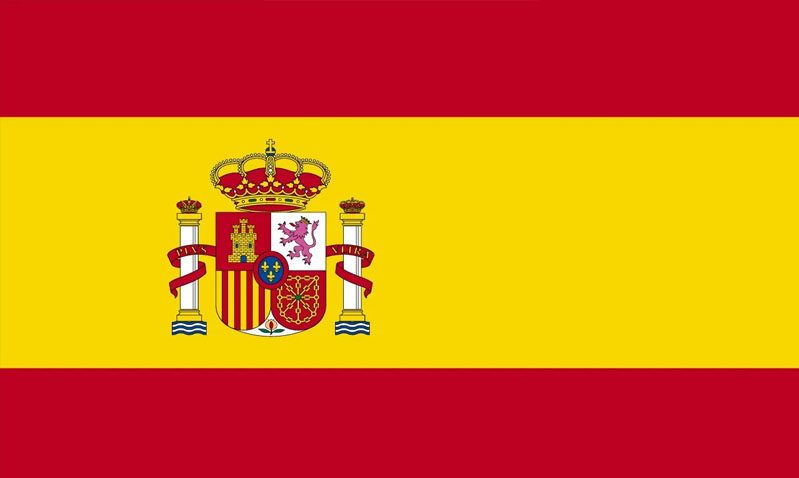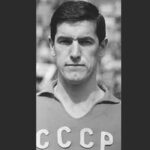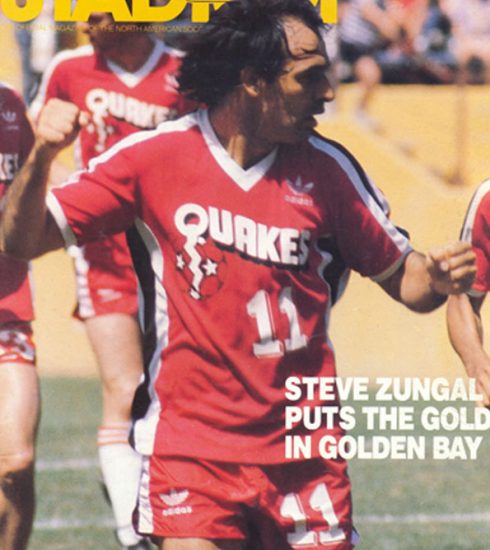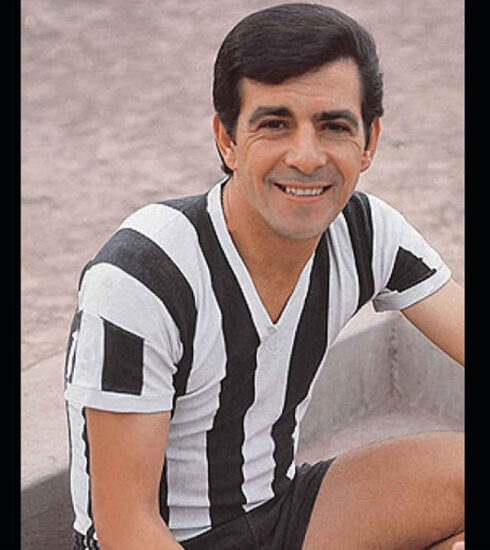ALVISE ZAGO: Talent and bad luck



It’s 9 October 1988.
The first match of the Serie A championship is being played.
At the Comunale di Torino the granata host Sampdoria, one of the emerging teams on the Italian football scene.
Vialli. Mancini, Vierchwood, Pagliuca, Cerezo, Chiesa … all players of great quality and brought to Genoa by the ambitious and equally wealthy president Paolo Mantovani.
Torino came from a very good season, which ended in seventh place, but there were many perplexities regarding the transfer campaign of the summer that had just ended.
Tony Polster and Antonio Crippa were, despite promises from the management, sold in the summer market, as was the strong defender Corradini.
In their place came a strong Brazilian striker Muller, the Slav Skoro and another Brazilian, midfielder Edu.
On the Toro bench sat Gigi Radice, the man who a little more than 10 years earlier had moulded that wonderful team capable of winning a fantastic Scudetto and coming close to a second one, finishing just one point behind Juventus despite the 50 points won.
President Gerbi’s Torino certainly does not have the economic resources of the league’s greats, but as has always been the case in the glorious history of the Club della Mole, there is the possibility of drawing heavily from the country’s most prolific youth sector, thanks to which they can make up for the most difficult seasons.
Roberto Cravero, Giorgio Bresciani, Diego Fuser are just some of the many first-team players forged in those years by the skilful care of Sergio Vatta, Head of the Youth Sector of the Toro and capable, like no one else, of scouting and nurturing young talents.
One of these is ready today for his Serie A debut.
His name is Alvise Zago, he is 19 years old and is the ‘Joya’ (as they would say in Argentina) the jewel of the Granata youth sector.
Gigi Radice, after aggregating him to the first team during the summer preparation, has not a single doubt in the world: Alvise Zago is ready to take over the reins of his Torino’s game.
It will be him, with the number 10 shirt on his shoulders, who will act in the opponent’s half of the field trying to trigger the granata forwards.
To his vision of the game, his ability to jump over the man in dribbles and a refined technique Zago combines a great predisposition to work, a great desire to learn and a professionalism that is increasingly rare in boys of his age.
Some actually question his ‘heart’, that grit and competitive ‘nastiness’ that are indispensable qualities for wearing the jersey of this glorious and ‘unique’ club.
But it is Vatta himself who shuts up all the Cassandras.
“The attributes of a footballer are not only seen by the eagerness with which he chases an opponent or throws himself into a tackle. They can also and above all be seen when a player is not afraid to always ask for the ball, even in the most critical and delicate moments of a match when perhaps to many others the ball seems to be ‘burning’ between their feet. Alvise is someone who never hides on the pitch.”
There are two other striking peculiarities in this boy from Rivoli, a village in the Turin belt.
The first is a somewhat peculiar running style, with open ‘duck’ feet, which is partially corrected by sophisticated insoles.
The other, much more important, is a great ability in the aerial game, a characteristic that is certainly not common in footballers of his position and especially in athletes like Alvise who do not reach the six-foot mark.
The opener with Samp is not a lucky one.
Torino succumbed by three goals to two, but Zago played his part to the full.
His position in the starting eleven was never in question.
So we arrive on 4 December 1988.
Torino were losing their home match against Verona by one goal to nil.
The young Argentine striker Caniggia put the Scaligeri ahead a few minutes after the kick-off.
Torino came from a beautiful away win at the Olimpico against Roma and a positive result today could propel them towards prestigious positions.
Verona closed all the gaps with ease throughout the first half and indeed, the three-pronged attack deployed by the Scaligeri (Pacione, Galderisi and Caniggia) created several headaches for the Granata defence.
It was now less than a quarter of an hour to go when Torino were awarded a free kick from the left.
Skoro’s right-footed shot went in and, despite the area being well manned by the Venetian Gialloblu, there was one player in the Granata shirt who managed to take his time better than all the others and head the ball into the back of the net defended by Cervone.
That someone is Alvise Zago, who immediately runs, intoxicated with joy, towards the Filadelfia corner, ‘his’ corner from which he has watched dozens and dozens of Toro matches.
It was his first goal in Serie A.
A few weeks later, the coach of the National Under-21 team, Cesare Maldini, called him up for his first match in the Azzurri.
Alvise Zago is now much more than the simple promise blossomed just over a year earlier at the Viareggio Tournament won by Sergio Vatta’s Toro, whose ranks also included Diego Fuser and Giorgio Bresciani (top scorer of the tournament).
The first half of the season ended with Torino being sucked into the bottom half of the table, even though Alvise’s position in the starting eleven was never in question.
It was 21st February 1989.
For Torino, who were preparing to play the first match of the second half of the season at Marassi against Sampdoria, a difficult away match was in store.
Torino changed coach a few weeks ago, as always happens in these cases.
Gigi Radice has been replaced by Claudio Sala, the unforgettable ‘poet of the goal’ and protagonist on the field of that Torino that under Radice’s guidance had returned to the top of Italian football.
As mentioned, nothing has changed for Alvise Zago.
An immovable starter with Radice, an immovable starter with Claudio Sala.
The Blucerchiati are now at the top of the table and clearly have the favourites.
Torino, and Zago, had no intention of playing ‘sparring-partner’ for Vialli and his team-mates and after a few minutes of play it was Alvise Zago who put the Granata ahead.
It was his second goal in Serie A, and this time in a major match.
Samp reacted head-on and poured into the Granata half of the pitch.
After not even twenty minutes on the clock, however, something happened.
Something that by its dynamics “disorients” and frightens.
There’s a ball being headed away from the heart of the Granada area.
The ball is high and a few metres beyond the sixteen-metre line from the Toro goal.
Zago jumps to extend the trajectory and push the danger further away.
On the same ball, however, Victor, the Blucerchiati’s Spanish midfielder, also arrives vehemently.
The impact between the two is terrible.
Both fall unnaturally to the ground after the collision.
And on the ground they remain.
The one of greatest immediate concern is Victor, who remains face down on the ground motionless.
But a moment later it is Alvise’s screams that attract the attention of teammates and opponents.
Alvise is holding his right knee in his hands and the very first teammates who rescue him immediately realise how serious it is.
And as Victor slowly regains consciousness, it is Zago’s teammates who are scrambling to get the attention of the medical staff.
Zago’s right knee in touching the ground after the aerial take-off, unbalanced by the impact with the Spaniard, had a movement that was anything but natural.

There were immediate fears for the cruciate ligament, which, despite the great progress of surgery in recent years, still remains the bogeyman for practically all professional athletes.
When the doctors’ verdict arrived the next day, however, no one had taken into account the seriousness of the injury to the talented boy from Rivoli.
Rupture of both ligaments (anterior and posterior) and of the joint capsule.
A destroyed knee, in short.
There is talk of a long recovery time.
A year’s stop … probably more.
But there are also many who fear the worst and that is that Alvise Zago’s career came to an end on that cursed day at Marassi, in his 17th Serie A game.
Alvise Zago is not a quitter.
Football is in his blood, he doesn’t even consider the idea of a future without kicking a ball around.
Alvise will be back on a football pitch.
Exactly one and a half years later.
He will do so in Serie B, with the Pescara shirt on, on loan from ‘his’ Torino.
It will be a more than decent season, enriched by five goals in twenty matches.
Torino watched him, waited for him and continued to hope.
After all, he was the one who had been entrusted with the number 10 jersey, the one that once belonged to Valentino Mazzola … the one that the wonderful ‘granata’ people expected to see on the shoulders of that boy who had grown up in the youth teams for at least a decade.
At Torino he returned briefly, but he needed to play, to put minutes in his legs and completely rediscover himself and his match rhythm.
Another loan, this time to Pisa, and another discrete season.
Then, finally, in 1992 Alvise returned home.
Emiliano Mondonico hooked him up with the first team.
He put him on the field in a dozen games … before finally giving up on the fact that ALVISE ZAGO would never be the man he was in his early days and would never become the champion everyone was ready to bet on … Sergio Vatta, Gigi Radice, Cesare Maldini and Azelio Vicini.
He will be sold to Bologna where he will play a handful of games and then further and further down, further and further away from those stages that would have been rightfully his for many, many seasons.
Nola, Saronno, Varese, Seregno and Meda.
To end his days as a footballer in his Rivoli, contributing in a decisive way to take it from Eccellenza to Serie D.
At the age of 35, in 2004, Alvise said no more football.
Now he works with youngsters, to whom he passes on his great knowledge with his great modesty and sympathy, exactly the same as when he played in Serie A and got excited every time they put a microphone in front of his mouth.
Those who knew him speak of him as a serene and accomplished man with no regrets.
Happy to be back to putting on his boots and running on a football pitch after that terrible day in February 1989.
“All in all, I consider myself lucky. I still did the job I liked and got to know so many good people and so many different realities. And in the end I realised that scoring a goal is always a fantastic emotion … and it’s the same whether you play at the San Siro, the Olimpico or Cinisello Balsamo!”
These are his words, repeated in more than one interview … leaving the more difficult answer “Who could Alvise Zago have become?” to others.

That of Alvise Zago is one of the 38 stories told in http://www.urbone.eu/media/images/shop/questo-e-il-nostro-calcio.jpg





